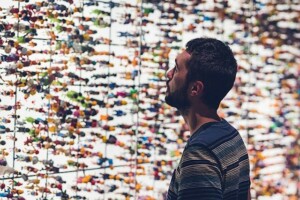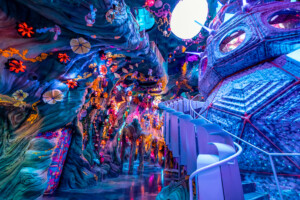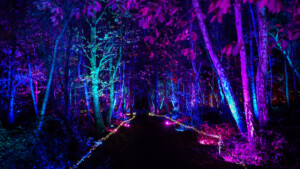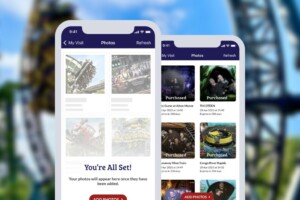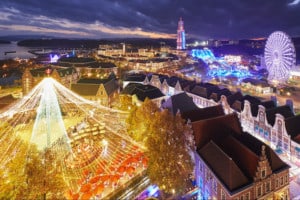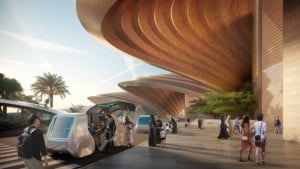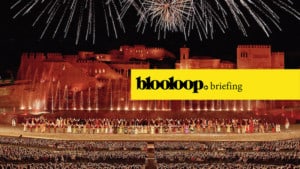The theme for SATE 2012, held at Disneyland Paris from September 19th to 21st could hardly have been more relevant to the world attractions professionals find themselves in today: “Cultural Diversity in Creating Successful Guest Experiences: Obstacle or Opportunity?”.jpg)
Related: Rick Rothschild on Creating Great Storytelling Experiences and SATE 2012/ Keith James at SATE 2012: How JRA has Adapted to Different Markets Worldwide
With western economies faltering and the rise of the BRIC countries, the landscape of the attractions business is changing with a rush to meet the demands of the world’s newly evolved middle classes. A good time then to consider the challenges and opportunities inherent in creating guest experiences in new markets.
The location at Disneyland Paris enabled delegates to walk into the park and see the stunning Disney Dreams! show, a night time spectacular of projection mapping on the Disney castle together with fireworks, laser and water fountain projections.
However, it was the opportunity to hear from the people shaping our industry and to get to know new contacts that brought 150 TEA members to Paris.
 With a rousing address on the nature of creativity across cultures, Joe Rohde (left), (SVP & Creative Executive, Walt Disney Imagineering), set the tone of the conference.
With a rousing address on the nature of creativity across cultures, Joe Rohde (left), (SVP & Creative Executive, Walt Disney Imagineering), set the tone of the conference.
Full details of the fascinating speakers at the conference are set out here, but for me some of the nuggets of wisdom I took home with me included:
Multicultural Teams:
Patrick Stadler gave an insight into creating Olympic events “beyond imagination” that are culturally relevant to the host nation but still accessible to a global audience.
Vernon Tao (Asia Pines Entertainment and Event) spoke about the Youth Olympics 2010 opening show and how managing cultural diversity is second nature to Singaporeans; “Singapore is never local – we are always looking out.”
Matthew Jessner (Franco Dragone Entertainment) then explained the challenges in creating the stunning House of the Dancing Water in Macao, an entertainment concept and performance not usually seen outside of Vegas or Florida. A key to the success was to find a “common language” and “create a population, not hire a cast”. Another interesting clash of cultures to be addressed was that of the atheletes who have to put aside their competitive inclinations to co-operate as performers.
Cultural Borders:
Bart Dohman (BRC Imagination Arts – The Netherlands) spoke about how the “small things in our business create different experiences and reactions in different nationalities.” Sapmi is a show in nine different languages that nationalities respond to in different ways, from the unemotion al Dutch to the weeping Italians.
al Dutch to the weeping Italians.
Steve Rhys (Forrec) offered these universal truths: “every project we do starts with a story” and “our need for stories is insatiable.”
Keith James (JRA) (right) had some blunt advice for us based on 41 years in the business: “listen first and don’t talk (especially if you’re an American)”, and “wherever you are, you’re a guest.”
Bob Weis (Executive Vice President, Creative, Walt Disney Imagineering) then talked through the process of Disney going into China with Disneyland Shanghai – “a unique Disney park with a strong Chinese influence.” The language seems to have been a particular challenge; “try translating Bibbidi Bobbidi Boutique into Mandarin.” With weekly classes on Chinese culture in Glendale, training up Chinese Imagineers and an early base of 400 staff in China to get a “sense of lifestyle”, Disney are doing everything possible to ensure that the Chinese will be part of the development process.
Cultural Engagement:
Jan Maarten de Raad (JoraVision) introduced the sessions on the challenges of cultural interpretation.
Laura Miotto (gsmprjct) talked about how “history can be told or questioned using an authentic collection” in relation to the Living Galleries at the National Museum of Singapore – “one picture is worth a hundred years.”
told or questioned using an authentic collection” in relation to the Living Galleries at the National Museum of Singapore – “one picture is worth a hundred years.”
Louise Allen (Adirondack Studios) discussed how for the Seneca Tribes, “a community that is able to celebrate its own culture is a stronger community.”
Audrey O’Connell (Natural History Museum) co-chaired the session and also spoke about the NHM’s work with overseas clients to “increase access to culture and science” and how “language and terminology on cultural projects always creates problems.”
As a mandarin speaker and visitor to China from childhood, Sophie Poirier (MU Events) had a good foundation for her work on a water stage show at OCT Shenzhen. When creating a culturally relevant attraction she suggests that for guests “sometimes you need someone to tell you who you are.” As far as working in China: “everything is Guanxi” (a system of mutual influence and interdependency that pervades Chinese society). The great opportunities for the entertainment industry will be realised by firms that “Think Big!” because in China “the new should be spectacular.”
 Aulini – a case study in authentic interpretation:
Aulini – a case study in authentic interpretation:
In probably the most inspirational session of the conference, the path to creating the Disney’s Aulani resort and spa in Hawaii was presented as a case study in how to offer guests an authentic experience that has cultural relevance for the local population.
Carmen Smith (VP of Creative Development, Walt Disney Imagineering) spoke about WDI’s strategy around cultural diversity and why “at WDI it is so important for us to be relevant and understand our guests wherever they are round the world.”
Djuan Rivers (Hotels and Convention Centres VP, Disneyland Paris) spoke about the challenge of addressing unrealistic expectations around the development, for instance that Disney “would solve any issue in Hawaii.”
Joe Rohde then gave a fascinating insight into how the creative process for this immersive family destination was handled. Going from the basis that Disney had made the decision to create a resort that was “visually and experientially easy to define in a competitive market place” and hopefully would “translate in to margin and segment penetration”, Rohde set out how even the smallest detail in the development owed its origin to contemporary Hawaiian culture thanks to the sensitive inclusion of native Hawaiians in the process.
New Audiences:
Leslie Morisetti (Leslie Morisetti Associates) (left) introduced the session with a look at London Zoo’s Lates, a successful initiative to bring young adults into the Zoo.
Andrea Dearden (Science Museum London) presented an interesting look at the Science Museum’s social media strategy. The Science Museum has enjoyed successful launch of the WebLab game in association with Google who were “gobsmacked by our results with 2.5 million players in the first 6 weeks.”
Frederic Nancel (Chateau de Chantilly) made us all long to go to Chateau de Chantilly. As Richard Nixon said, “Why have I been to Versailles seven times and never here?”
Marie-Sophie Mugica (Universcience) related how as Head of the Export Department she has taken the “Cite des Enfants” concept designed in France for museums into commercial environments overseas and overcome cultural differences. For example in Dubai there is no established culture of parents interacting with their children in a museum environment.
 New Sectors:
New Sectors:
Chris Conte (Electrosonic) (right) opened the session by asking “where can we take our business next?”, with an overview of examples of technology developed for the attractions sector that have been successfully applied in other sectors.
Ray Hole (ray hole architects and 0007) started from the question posed by JRA a few years ago, “what do you do when the whole world is themed?”, and moved us forward to “what do you do when the whole world is an experience?” Describing his work in collaboration with Blair Parkin of Visual Acuity to create an office space for the Smart Well Technology group at the Kuwait Oil Collaboration Centre, he showed how to “stage an industrial workplace experience” and create “wow with a purpose.”
Another example from the architectural profession of how buildings can reach out to us on an emotional level was revealed by Alex McCuaig (Met Studio) who talked about the inspiring addiction education centre in Culiacán, Mexico. By using techniques usually seen in attractions, the team highlight the ugly face of addiction in a town where 40% of teenagers are crystal meth addicts, creating a culturally appropriate space where people can also come to seek help, education and safe social contact. The Lancet has described the centre as creating “a choice for life”.
 The final presentation was Sanjay Kara (BAPS Charities) showing how multimedia technologies have been used to represent Hindu philosophy at the Akshardham-Gandhinagar Temple and Water Show. It was interesting to hear directly from a religious group in the commissioning role.
The final presentation was Sanjay Kara (BAPS Charities) showing how multimedia technologies have been used to represent Hindu philosophy at the Akshardham-Gandhinagar Temple and Water Show. It was interesting to hear directly from a religious group in the commissioning role.
Wrap Up:
George Wiktor (The GW Group) (left) then led a much anticipated wrap-up session to bring the conference to a close.
Overall the conference was packed with fascinating facts, lessons learned and inspirational examples of cultural diversity in action in the attractions industry. Already looking forward to a trip to the US for next year’s SATE.
SATE images: Thanks to Phil Hartley
SATE sponsors included:







